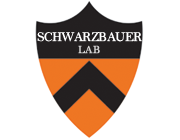Roles for beta(pat-3) integrins in development and function of Caenorhabditis elegans muscles and gonads.
Type
Heterodimeric integrin receptors for extracellular matrix (ECM) play vital roles in bidirectional signaling during tissue development, organization, remodeling, and repair. The beta integrin subunit cytoplasmic domain is essential for transmission of many of these signals and overexpression of an unpaired beta tail in cultured cells inhibits endogenous integrins. Unlike vertebrates, which have at least nine beta subunit genes, the nematode Caenorhabditis elegans expresses only one beta subunit (betapat-3), and a null mutation in this gene causes embryonic lethality. To determine the functions of integrins during larval development and in adult tissues, we have taken a dominant negative approach by expression of an HA-betatail transgene composed of a hemagglutinin (HA) epitope tag extracellular domain connected to the betapat-3 transmembrane and cytoplasmic domains. Expression of this transgene in muscle and gonad, major sites of integrin expression, caused a variety of phenotypes dependent on the level of transgene expression. Abnormalities in body wall and sex muscles led to uncoordinated movement and egg-laying defects. Significant anomalies in migration and pathfinding were caused by tissue-specific expression of HA-betatail in the distal tip cells (DTC), the cells that direct gonad morphogenesis. A pat-3 gene with Tyr to Phe mutations in the cytoplasmic domain was able to rescue pat-3 null animals but also showed DTC migration defects. These results show that betapat-3 plays important roles in post-embryonic organogenesis and tissue function.

